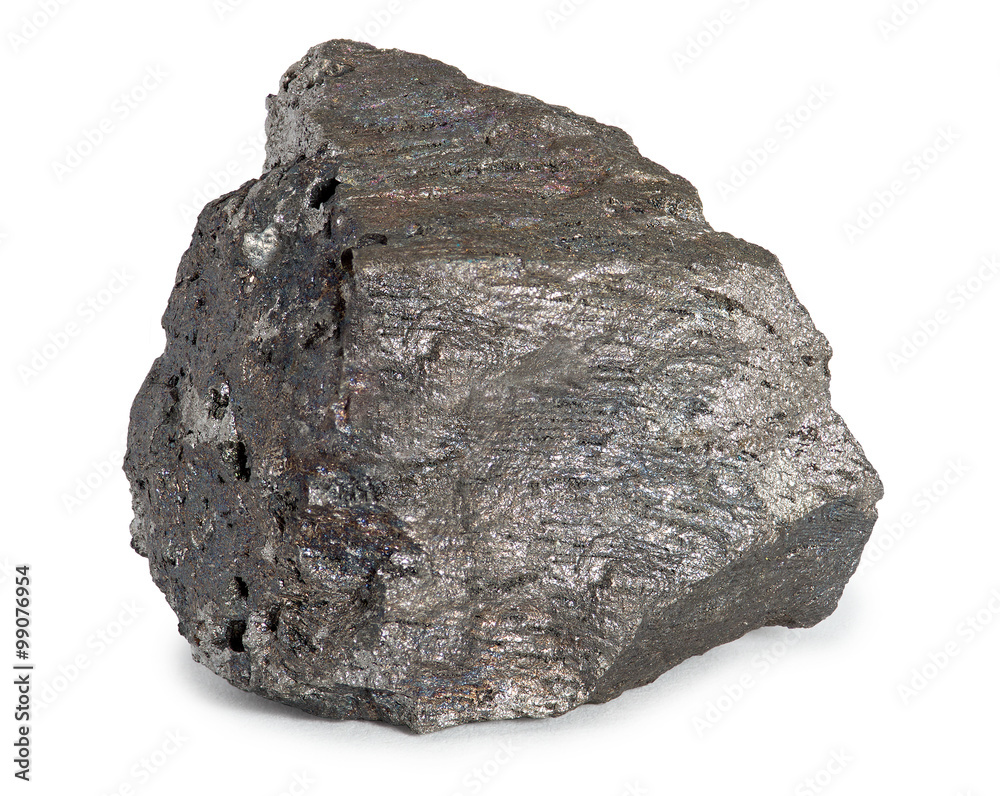Miedziano Czerwony Mineral Ruda Metalu O Symbolu Ni

Alright everyone, let's dive into the fascinating world of... well, let's just say "that reddish-brown metallic ore with the symbol Ni"! Don't worry, by the end of this guide, you'll be able to confidently discuss everything you need to know for your exam. We'll break it down into easily digestible chunks. Think of me as your friendly tutor, guiding you through the complexities. Let's get started!
First things first: we're talking about nikiel! Yes, that's right, that's the Polish word for nickel. So, whenever you see "Miedziano Czerwony Mineral Ruda Metalu O Symbolu Ni," they are essentially describing nickel and its ores.
What is Nickel and Why Should We Care?
Nickel is a chemical element with the symbol Ni and atomic number 28. It's a silvery-white lustrous metal that is hard, malleable, ductile, and a fairly good conductor of electricity and heat. Now, you might be thinking, "Okay, that's nice, but why do I need to know this?" Well, nickel is incredibly important in a variety of industrial applications, primarily because of its resistance to corrosion and its ability to enhance the properties of other metals.
Think of it this way: nickel is like the superhero of metals. It swoops in and makes other metals stronger and more resistant to the forces of decay (corrosion). This is why it’s so widely used in alloys, most notably stainless steel. Stainless steel is used everywhere from kitchen sinks and cutlery to surgical instruments and construction materials. Can you imagine how quickly things would rust and fall apart without nickel? Pretty scary, right?
So, remember these key takeaways about nickel itself:
- Symbol: Ni
- Atomic Number: 28
- Appearance: Silvery-white, lustrous
- Properties: Hard, malleable, ductile, good conductor of electricity and heat, corrosion-resistant
- Major Use: Alloying element, especially in stainless steel
Now, let’s talk about where we find this superhero...
Nickel Ores: Where to Find the Treasure
Nickel doesn't just appear in its pure form in nature (though it is sometimes found in small quantities in native form). It's usually found in the form of ores. And "Miedziano Czerwony Mineral Ruda Metalu" is basically a descriptive phrase for nickel ore, hinting at its copper-reddish color and the fact that it's a mineral ore from which we extract the metal.
The two main types of nickel ores are:
-
Sulfide Ores: These ores are associated with magmatic sulfide deposits, meaning they formed from molten rock (magma) that cooled and solidified. Think of it like this: deep underground, hot, liquid rock contains dissolved metals, including nickel. As this magma cools, the metals separate out and combine with sulfur to form sulfide minerals.
- Example: Pentlandite ((Ni,Fe)<sub>9</sub>S<sub>8</sub>) is the most important sulfide mineral of nickel. It's often found alongside other sulfide minerals like pyrrhotite and chalcopyrite.
- Formation: Formed through magmatic segregation – the separation of different minerals during the cooling of magma.
- Location: Found in large deposits associated with mafic and ultramafic igneous rocks (rocks that are rich in magnesium and iron), such as those found in Canada (Sudbury Basin), Russia (Norilsk), and South Africa (Bushveld Complex).
- Extraction: Sulfide ores are typically extracted through open-pit or underground mining techniques. The ore is then crushed, ground, and concentrated through a process called froth flotation, which separates the valuable sulfide minerals from the unwanted gangue (waste rock).
- Fun Fact: The Sudbury Basin in Canada is believed to have been formed by a massive meteorite impact, which provided the energy and geological conditions necessary for the formation of the nickel-rich sulfide deposits.
-
Laterite Ores: These ores are formed through the weathering (chemical breakdown) of ultramafic rocks (like peridotite and serpentinite) in tropical and subtropical climates. Imagine a hot, humid environment where rainwater slowly dissolves away the less resistant minerals in the rock, leaving behind a concentrated residue of nickel-bearing minerals.
- Formation: Formed by intense chemical weathering and leaching of ultramafic rocks in tropical climates.
- Location: Found in tropical and subtropical regions like New Caledonia, Indonesia, the Philippines, Brazil, and Cuba.
- Minerals: These ores typically contain nickel in the form of hydrous nickel silicates, such as garnierite (a general term for a mixture of nickel-containing serpentine minerals).
- Extraction: Laterite ores are typically extracted through open-pit mining. The ore is then processed using various methods, including pyrometallurgical (heat-based) and hydrometallurgical (chemical-based) techniques, to extract the nickel.
- Challenge: Processing laterite ores can be more challenging and energy-intensive than processing sulfide ores.
Understanding the difference between sulfide and laterite ores is crucial. They form in different environments, contain different minerals, and require different extraction techniques.
Here’s a quick comparison table:
| Feature | Sulfide Ores | Laterite Ores | |-------------------|-------------------------------------------|-----------------------------------------------| | Formation | Magmatic segregation | Chemical weathering of ultramafic rocks | | Location | Canada, Russia, South Africa | New Caledonia, Indonesia, Philippines, Brazil | | Key Minerals | Pentlandite | Garnierite | | Climate | Not climate dependent | Tropical and subtropical | | Extraction | Open-pit or underground mining, froth flotation | Open-pit mining, pyrometallurgy, hydrometallurgy|
Important Vocabulary:
- Magmatic Segregation: The process by which different minerals separate out during the cooling of magma.
- Ultramafic Rocks: Rocks that are rich in magnesium and iron and contain very little silica. Examples include peridotite and serpentinite.
- Weathering: The chemical and physical breakdown of rocks and minerals at the Earth's surface.
- Leaching: The process by which soluble materials are dissolved and removed from soil or rock by water.
- Froth Flotation: A process used to separate valuable minerals from unwanted gangue by creating a froth that selectively carries the desired minerals.
- Pyrometallurgy: A process that uses high temperatures to extract metals from their ores.
- Hydrometallurgy: A process that uses chemical solutions to extract metals from their ores.
Nickel Uses: Beyond Stainless Steel
While stainless steel is the biggest application for nickel, it's not the only one. Nickel finds its way into a surprisingly wide range of products and industries.
- Batteries: Nickel is a key component in rechargeable batteries, particularly nickel-cadmium (NiCd) and nickel-metal hydride (NiMH) batteries. These batteries are used in everything from power tools and cordless phones to electric vehicles.
- Alloys: Besides stainless steel, nickel is used in other alloys, such as:
- Nickel-Copper Alloys (Monel): These alloys are highly resistant to corrosion and are used in marine applications, chemical processing equipment, and pumps.
- Nickel-Chromium Alloys (Nichrome): These alloys have high electrical resistance and are used in heating elements in toasters, hair dryers, and electric furnaces.
- Shape Memory Alloys (Nitinol): These alloys can "remember" their original shape and return to it after being deformed. They are used in medical devices, robotics, and aerospace applications.
- Plating: Nickel plating provides a protective and decorative coating on other metals. It is used on everything from plumbing fixtures and automotive parts to jewelry and electronics.
- Catalysis: Nickel compounds are used as catalysts in various chemical reactions, including the hydrogenation of vegetable oils (turning liquid oils into solid fats) and the production of ammonia.
- Coins: Nickel is used in the production of coins in many countries.
So, as you can see, nickel plays a vital role in modern society. From the everyday objects we use to the advanced technologies we rely on, nickel is a hidden hero.
Environmental Considerations
It's important to acknowledge that nickel mining and processing can have environmental impacts. These include:
- Habitat Destruction: Open-pit mining can lead to the destruction of natural habitats and the displacement of wildlife.
- Water Pollution: Mining operations can release pollutants into waterways, including heavy metals and chemicals used in processing.
- Air Pollution: Smelting (the process of extracting metal from its ore by heating) can release air pollutants, such as sulfur dioxide, which can contribute to acid rain.
- Greenhouse Gas Emissions: Mining and processing require energy, which often comes from fossil fuels, contributing to greenhouse gas emissions.
However, the industry is working to mitigate these impacts through:
- Rehabilitation of Mined Land: Restoring mined areas to a natural state after operations cease.
- Improved Waste Management: Implementing better waste management practices to prevent pollution.
- Cleaner Smelting Technologies: Developing and using cleaner smelting technologies to reduce air emissions.
- Sustainable Mining Practices: Adopting more sustainable mining practices that minimize environmental impact.
It’s important to understand both the benefits and the environmental considerations associated with nickel.
Key Summary Points:
- Nickel (Ni) is a silvery-white, corrosion-resistant metal crucial for stainless steel and other alloys.
- Nickel ores are primarily sulfide ores (like pentlandite) formed by magmatic segregation and laterite ores (containing garnierite) formed by weathering of ultramafic rocks.
- Sulfide ores are typically found in Canada, Russia, and South Africa, while laterite ores are found in tropical and subtropical regions like New Caledonia and Indonesia.
- Nickel has diverse uses beyond stainless steel, including batteries, plating, catalysis, and coinage.
- Nickel mining has environmental impacts, but the industry is working to mitigate them through various strategies.
Remember, "Miedziano Czerwony Mineral Ruda Metalu O Symbolu Ni" simply points you towards the world of Nickel! Understanding the types of ores, their formation, extraction methods, and the various applications of nickel will definitely help you ace your exam. Good luck! You've got this!







